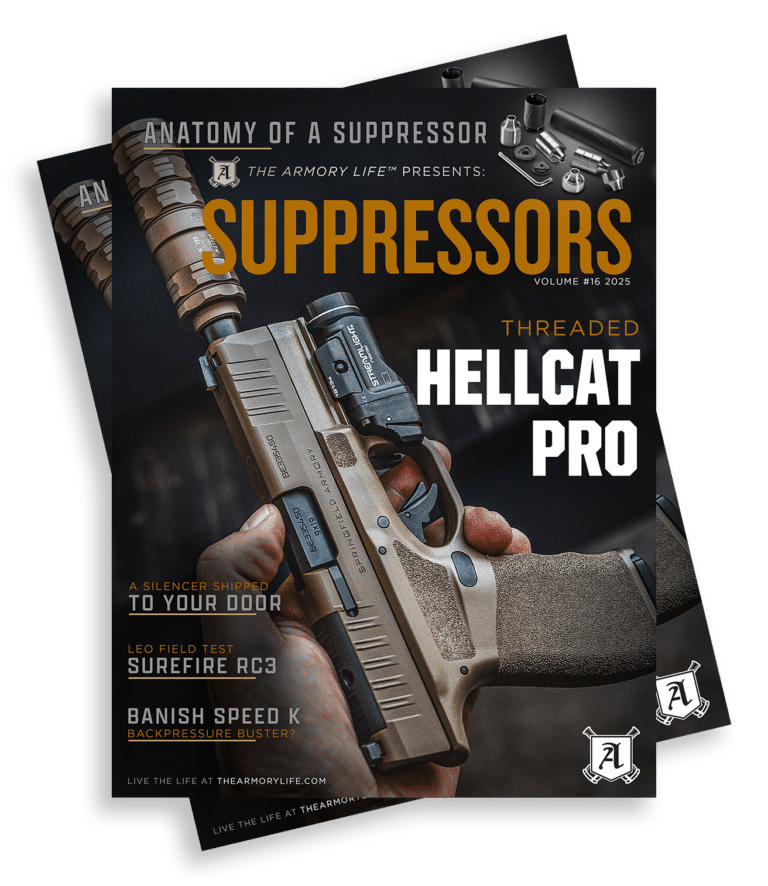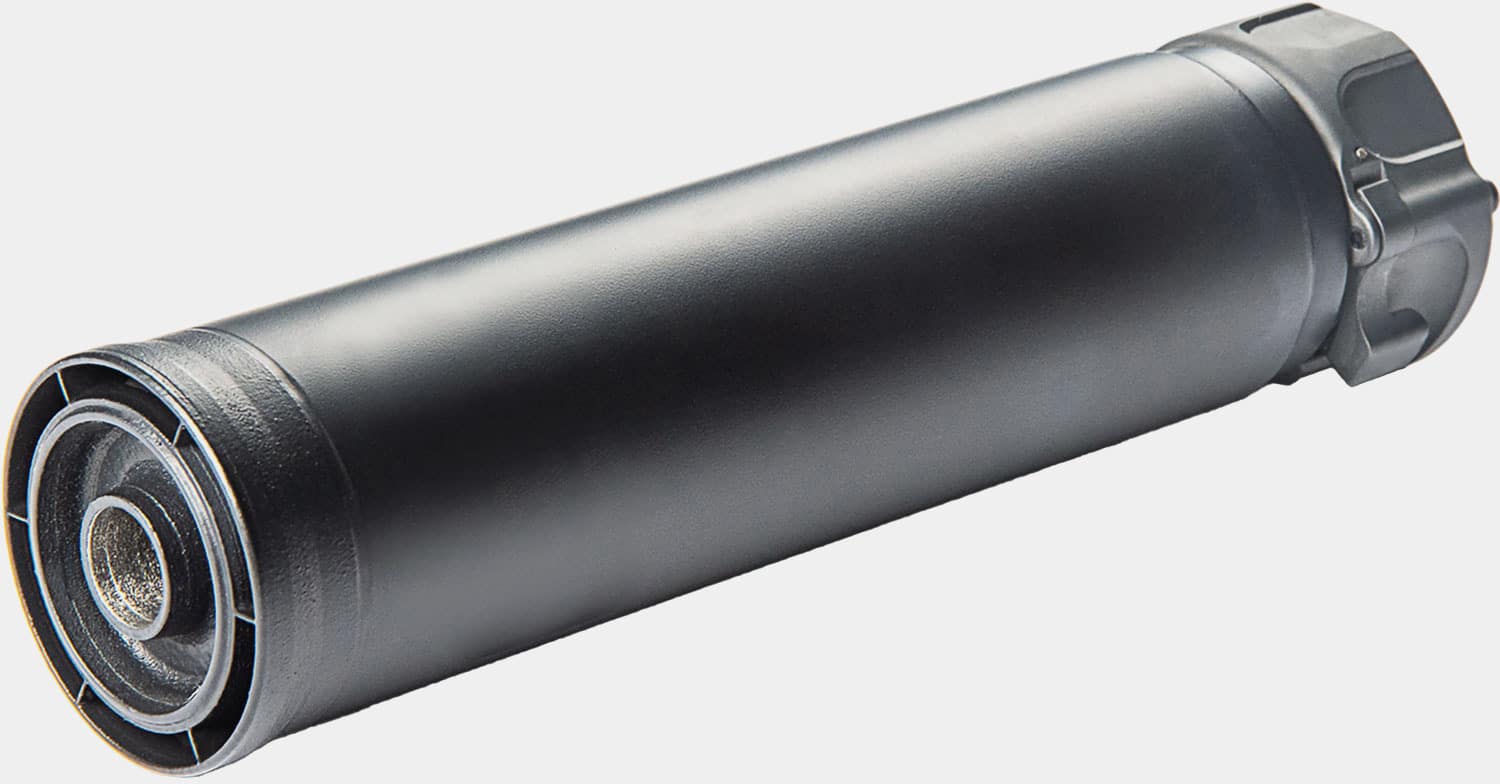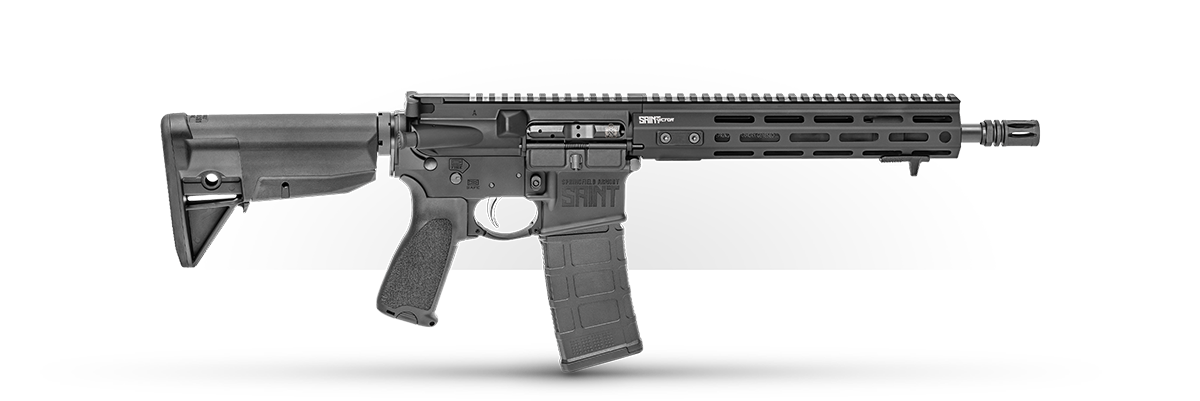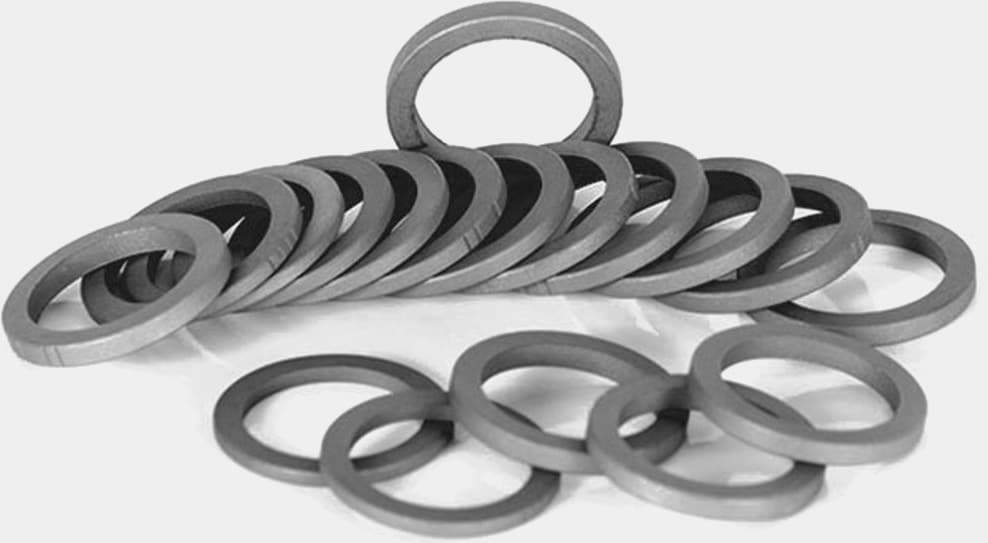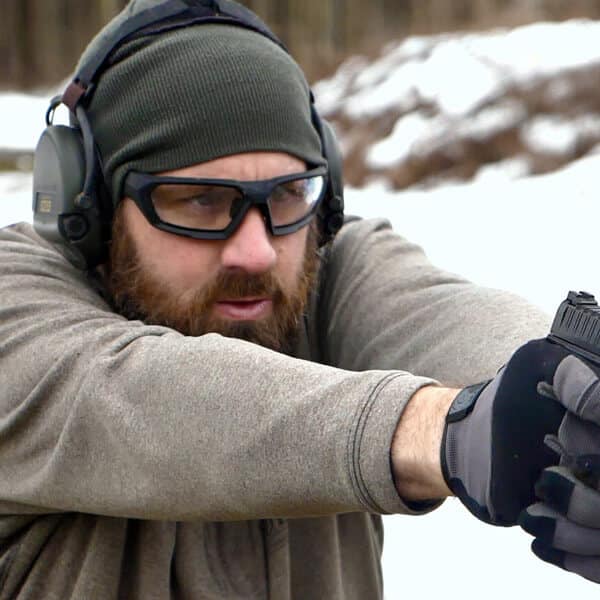SureFire RC3 Suppressor Review
December 13th, 2024
9 minute read
In today’s article, author Paul Carlson reviews the SureFire SOCOM556-RC3 suppressor. Designed for rugged use, the SureFire RC3 suppressor has a quick mount design, virtually no muzzle flash and a reported 60% reduction in back pressure. How does it perform on a SAINT AR-style rifle when carried daily by a sheriff’s deputy? That’s what Carlson set out to discover. The suppressor was provided by SureFire to the author for review.
As a full-time deputy and Tactical Response Team member in northeast Ohio, I demand a lot from my equipment. That is particularly true when it comes to my rifle. A suppressed 5.56mm SAINT Victor short-barreled rifle (SBR), it spends more than 200 miles every shift residing in a security drawer in the back of my cruiser — often over some rough terrain.
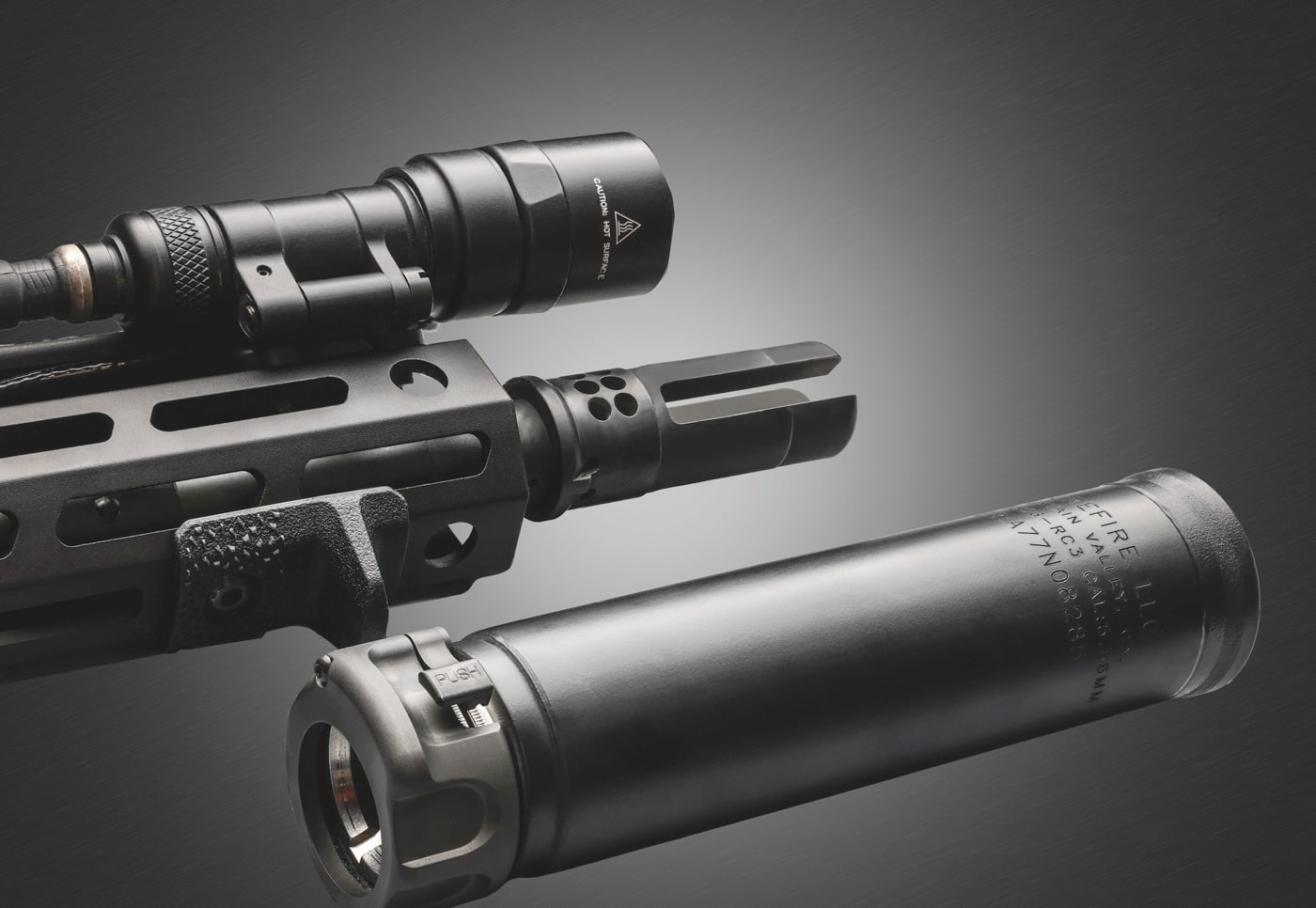
Despite this consistent abuse, it needs to be ready to go at a moment’s notice. I deploy my rifle regularly, and when I do, the stakes are high. The citizens I serve, my colleagues, and I myself depend on the performance of tools like this rifle, so I am always looking to maximize its durability, reliability and performance.
When I first started as a deputy, my agency approved my SBR and its attached suppressor for duty use. While the suppressor I pressed into service at that time wasn’t perfect, it performed. I was constantly verifying that the suppressor was properly affixed to my rifle, and I found myself, at times, frustrated with the dirty air I was breathing on the range with my carbon-caked SAINT. Anyone who has run a suppressed direct-gas-impingement rifle knows exactly what I’m talking about.
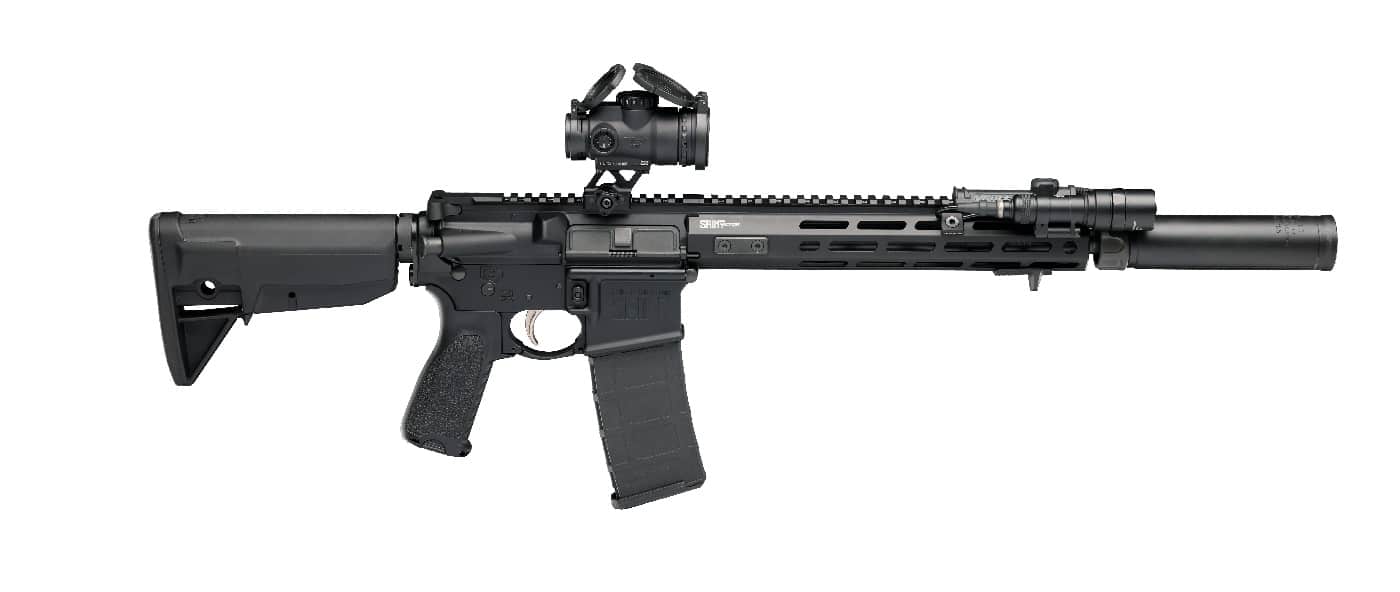
When SureFire announced the release of the SOCOM556-RC3 fast-attach/low back-pressure suppressor, I was immediately interested. I reached out to the powers that be, and it wasn’t long before I had an RC3 on my rifle.
Innovative Benefits
According to SureFire, the RC3 is result of decades of the company’s innovation in materials and manufacturing techniques combined with an extensive flow dynamics study. Additionally, the company claims that it offers a 60% reduction in the shooter’s face (compared to the RC2).
While SureFire may not have invented the flow-through technology utilized in the SOCOM556-RC3, they may very well may have perfected it.
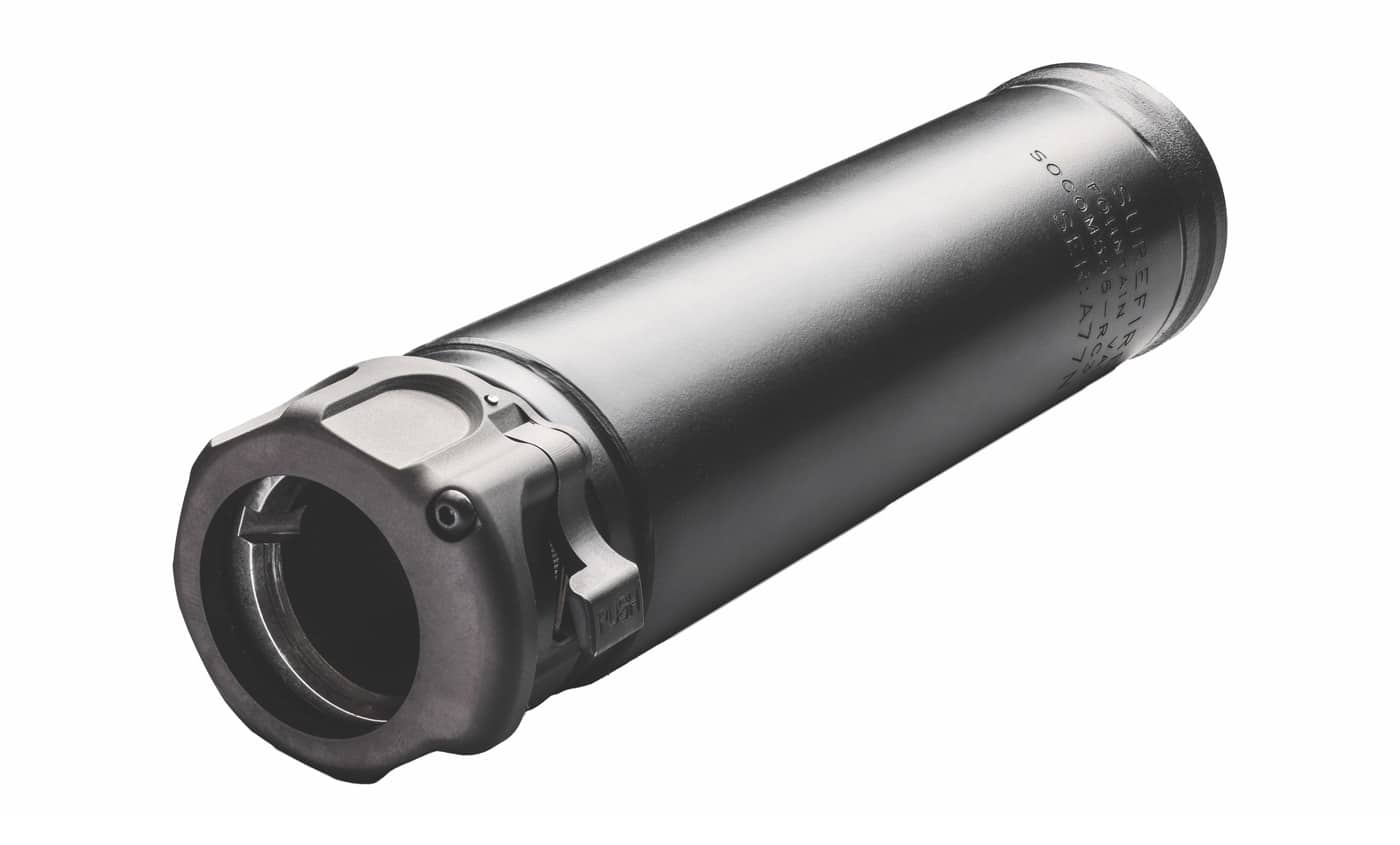
No matter how you cut it, firing a 5.56mm rifle produces a tremendous amount of gas. Traditional suppressors force those gasses back through the gas tube, into the bolt and toward the shooter’s face. Sustained fire results in a cloud of “smog” and a layer of carbon on the inside of the rifle. Utilizing accessories like gas-diverting charging handles can help, but a full training session is sure to result in a dirty rifle and a what would seem like a potential case of black lung.
Flow-through suppressors such as the RC3 are a different breed. Instead of forcing excess gasses back into the rifle, this gas instead flows out of the muzzle end of the suppressor. This design aids immensely with the previously mentioned issues. Gasses are forced away from the shooter, resulting in cleaner air and a cleaner rifle.
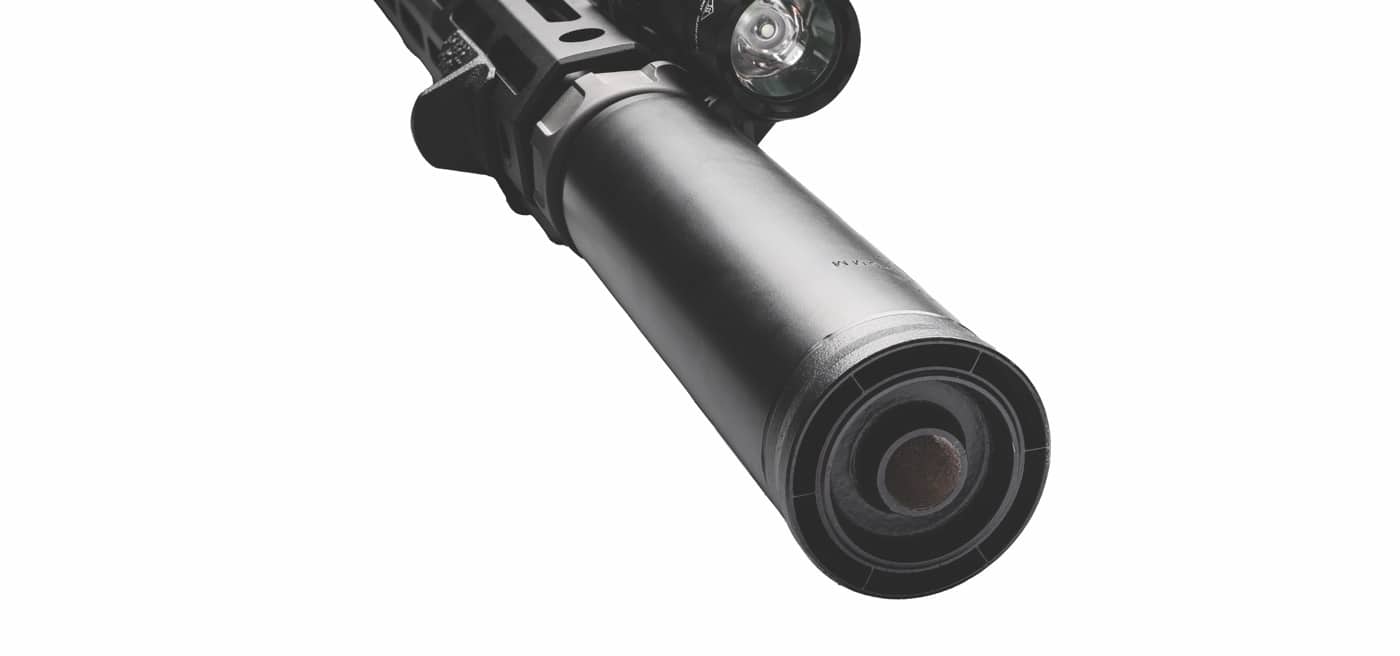
Possibly even more importantly, the gasses are directed away from the operating system. The impact (or lack of impact) on the internals of the rifle are significant. Right or wrong, I tend to run my rifles with excess gas to ensure full reliability. Adding a suppressor means even more gas going through the rifle. The flow-through design of SureFire’s RC3 reduces back-pressure, thereby minimizing the impact on the bolt-carrier group and minimizing the need for an adjustable gas block. This reduces both complexity and potential failure points.
Obviously, anything that reduces complexity and increases reliability is a significant win for a duty rifle.
Setting Up the RC3
Attaching the RC3 requires the use of a SureFire muzzle device. You can choose between options like a muzzle brake; three or four prong open-tine flash suppressors; or a traditional birdcage-type, closed-tine flash suppressor. Whichever muzzle device you choose to attach, make certain it is compatible with the RC3.
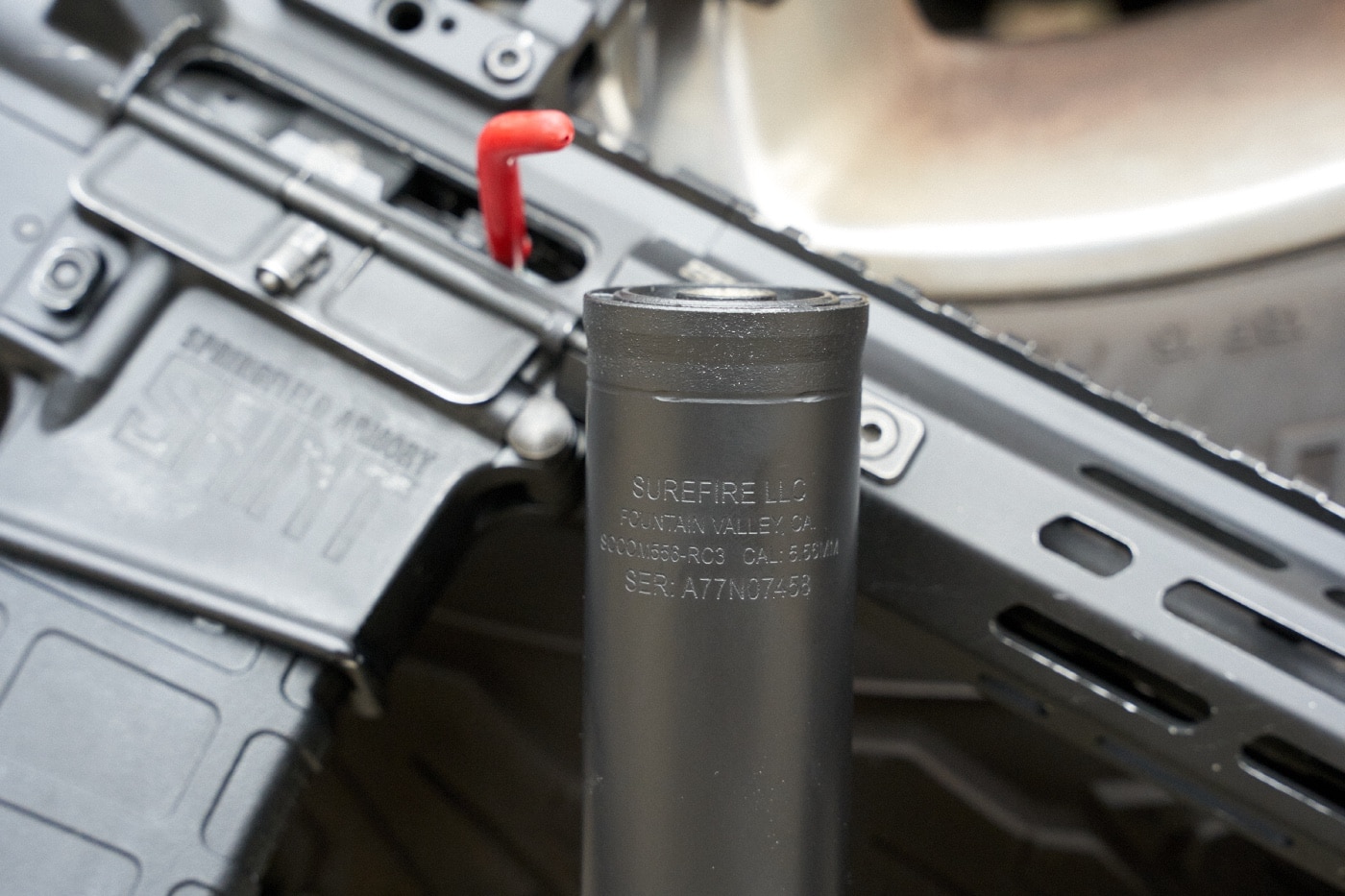
Depending on the muzzle device you select, timing — the rotational stopping point of the muzzle device when threaded — is very important. My RC3 lives on my rifle, so I always ensure the locking lug of the muzzle device is at the six o’clock position so I can always remove and reattach my suppressor without thought.
To achieve proper timing, I turned to Precision Armament’s Accu-Washer Muzzle Device Alignment System. Following the directions was simple. After installing the first alignment washer, I referenced the included table, installed the correct washer and torqued down my flash hider in perfect alignment. There was no need to guess and stack shim washers and risk a misalignment of the muzzle device, thereby increasing the risk of damage to your suppressor.
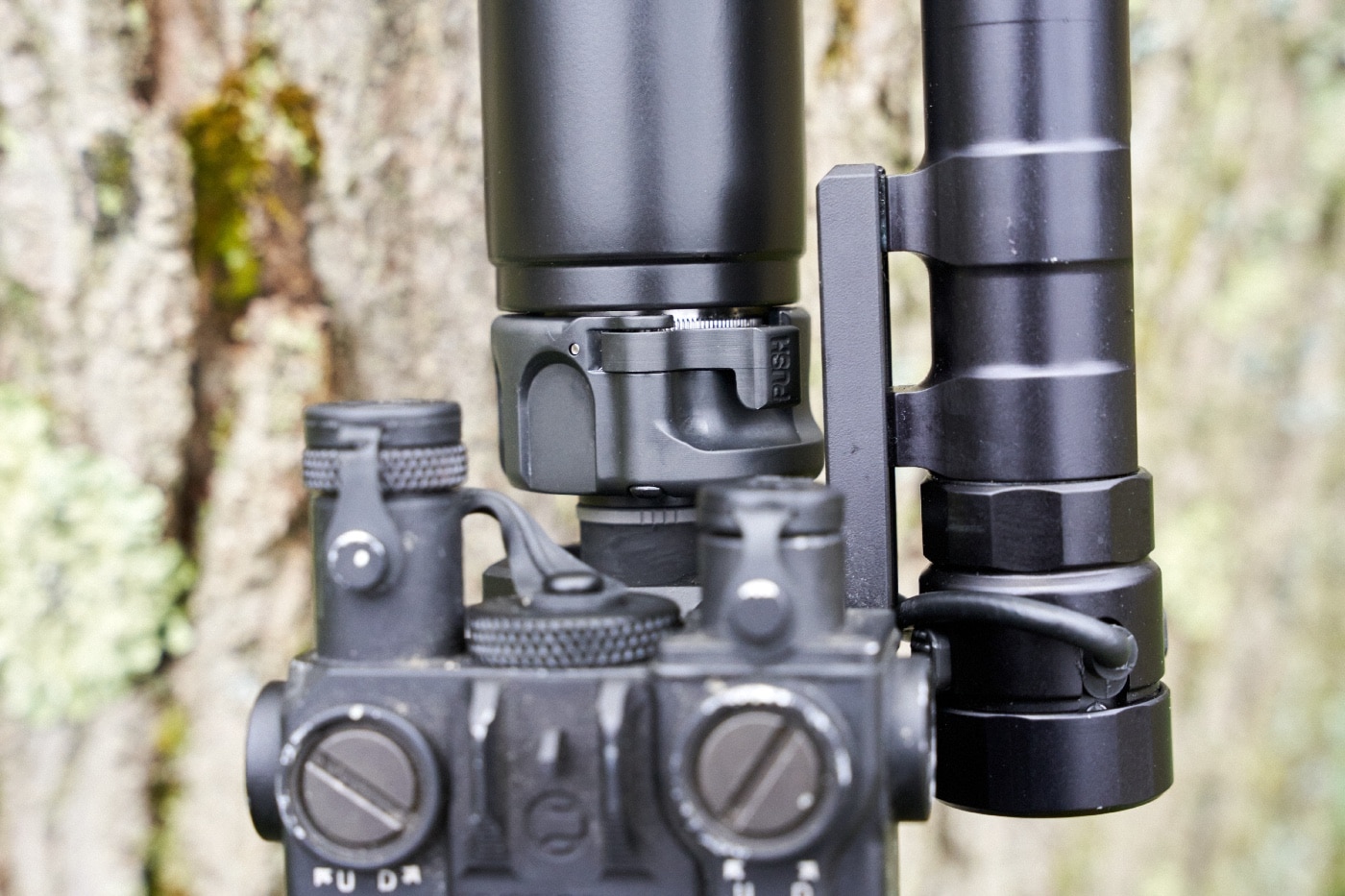
Mounting the RC3 is simple. First, ensure that the locking collar release lever set screw is aligned with the mounting slot on the suppressor. Slide the suppressor completely onto the muzzle device then simply turn the locking collar counter clockwise until it stops. You’ll hear the ratchet working. To remove, depress the release lever, then rotate the locking collar clockwise until it stops. You can then slide the RC3 off the muzzle device.
Live-Fire Performance
Once I had the RC3 set up on my SBR, a proper break-in was the first step. SureFire recommends a 100-round break-in period to reach optimal flash and sound suppression. I can only assume it’s necessary to remove any residues left from the manufacturing process. Obviously, you need to verify proper function and your zero. Also, who doesn’t want to take their new suppressor for a spin?
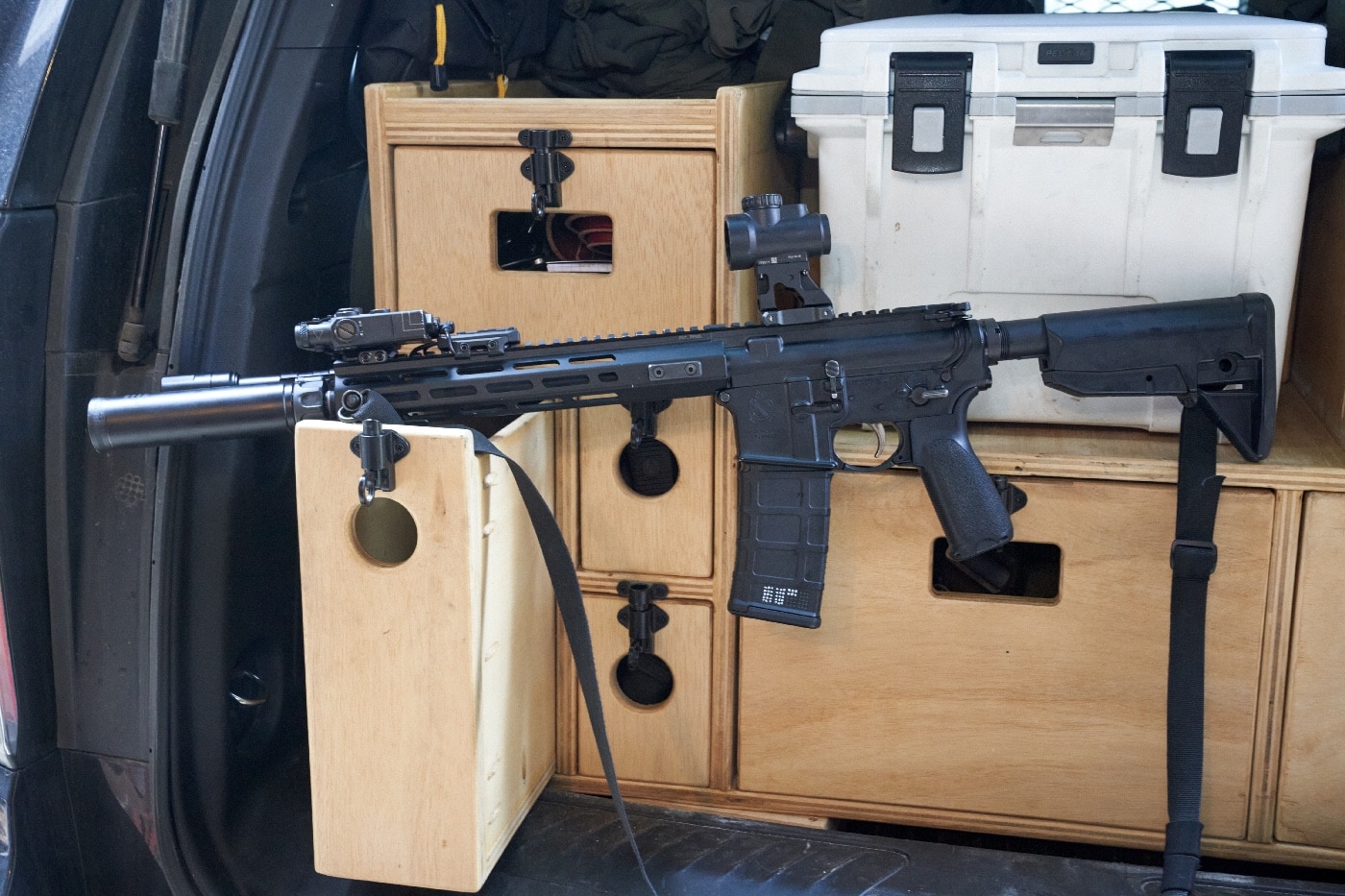
I found no appreciable difference between the first round I fired compared to the 500th (I decided to really run it that first time out). I’m not recommending you skip your break-in period, I simply found the RC3 to be a performer right out of the box.
One thing to be aware of with a suppressor is potential point of impact shift. I had a chance to speak with some other RC3 users and learned that some did experience a shift while others did not. I personally found that at 50 yards I had a consistent shift of three inches low with the suppressor attached versus when I shot unsuppressed. This isn’t an issue, just a fact to know and understand.
As noted, my suppressor lives on my SAINT, so I simply zero with the suppressor on. If I am forced to shoot unsuppressed, I now know I simply need to hold for three inches at 50.
I found the SureFire RC3 to be a very flat-shooting suppressor. Paired with some Winchester 55-gr. rounds, I was easily able to track my dot between shots with a slight 12 o’clock lift. The rifle settled right back on the point of aim, even off-hand at 50 yards.
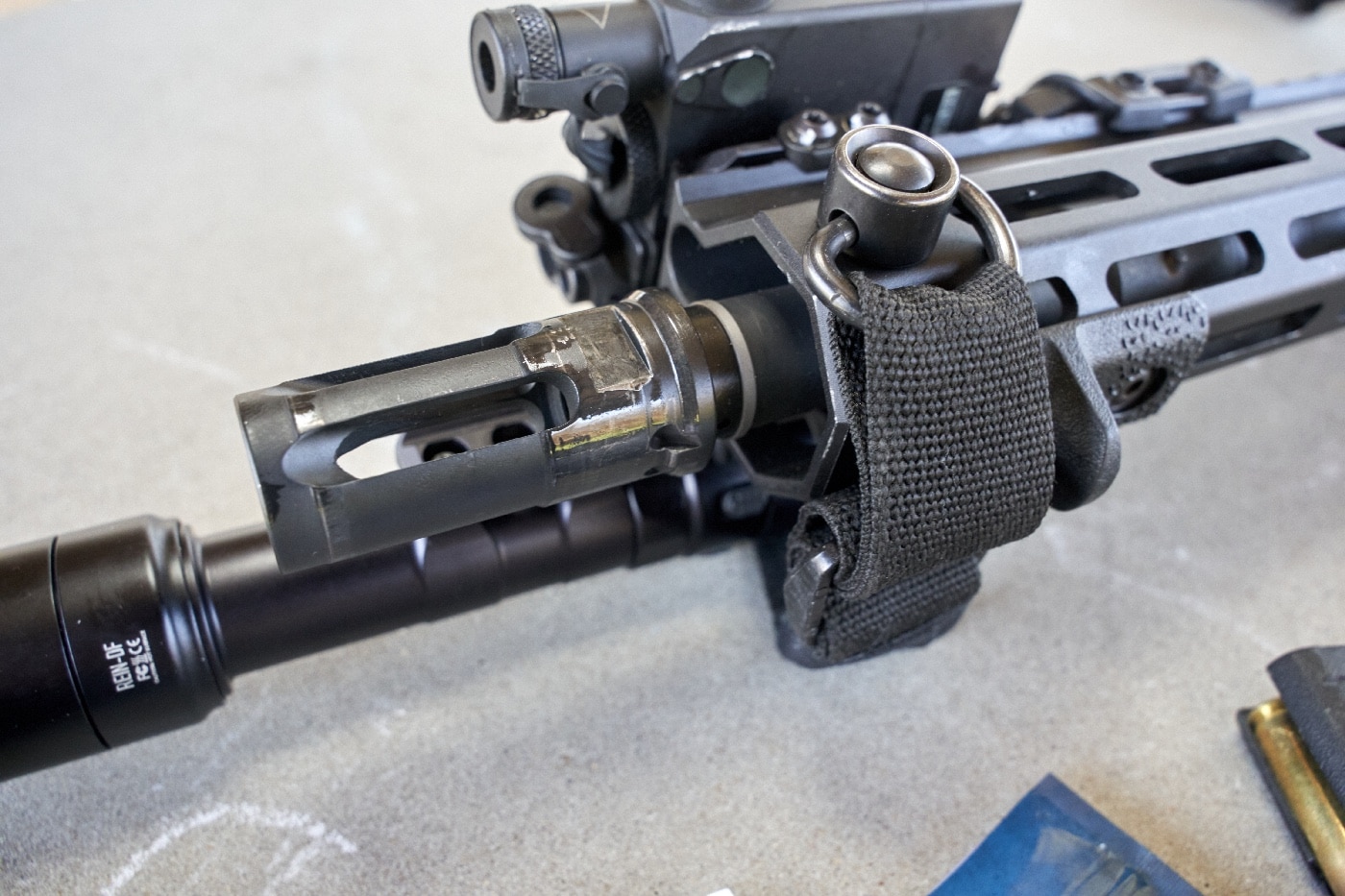
The Impact
Despite what you may see — and not hear — in the movies, suppressed 5.56 isn’t totally quiet due to the rounds breaking the sound barrier in flight. However, shooting suppressed is infinitely more pleasant than running wide open.
The SureFire RC3 certainly does its job of easing the decibels on the shooter. More importantly, the RC3 suppresses the flash wonderfully. I filmed many strings of fire at 120 frames per second hoping to catch some flash. It didn’t happen. This was true even in the break-in period. My old suppressor, which is not a flow-through design, exhibited flash on virtually every shot.
Now on to the elephant in the room. Blowback. Quite frankly, the SureFire RC3 is a dream to shoot. I ran some head-to-head tests against my old can, and the difference was night and day. With the old can, I was breathing in tons of gas. After a 20-round string of rapid fire, it would make my eyes water. With the RC3, when I shot 20 rounds of rapid-fire there was simply no gas in my face.
My Mantra
At a recent SWAT school I attended, they taught a beneficial make-ready mantra to help ensure the readiness of the rifle. Sling, stock, sights, light, laser, suppressor. The intent is to work your rifle from the sling to the suppressor, ensuring that each critical system is viable and set properly for mission success.
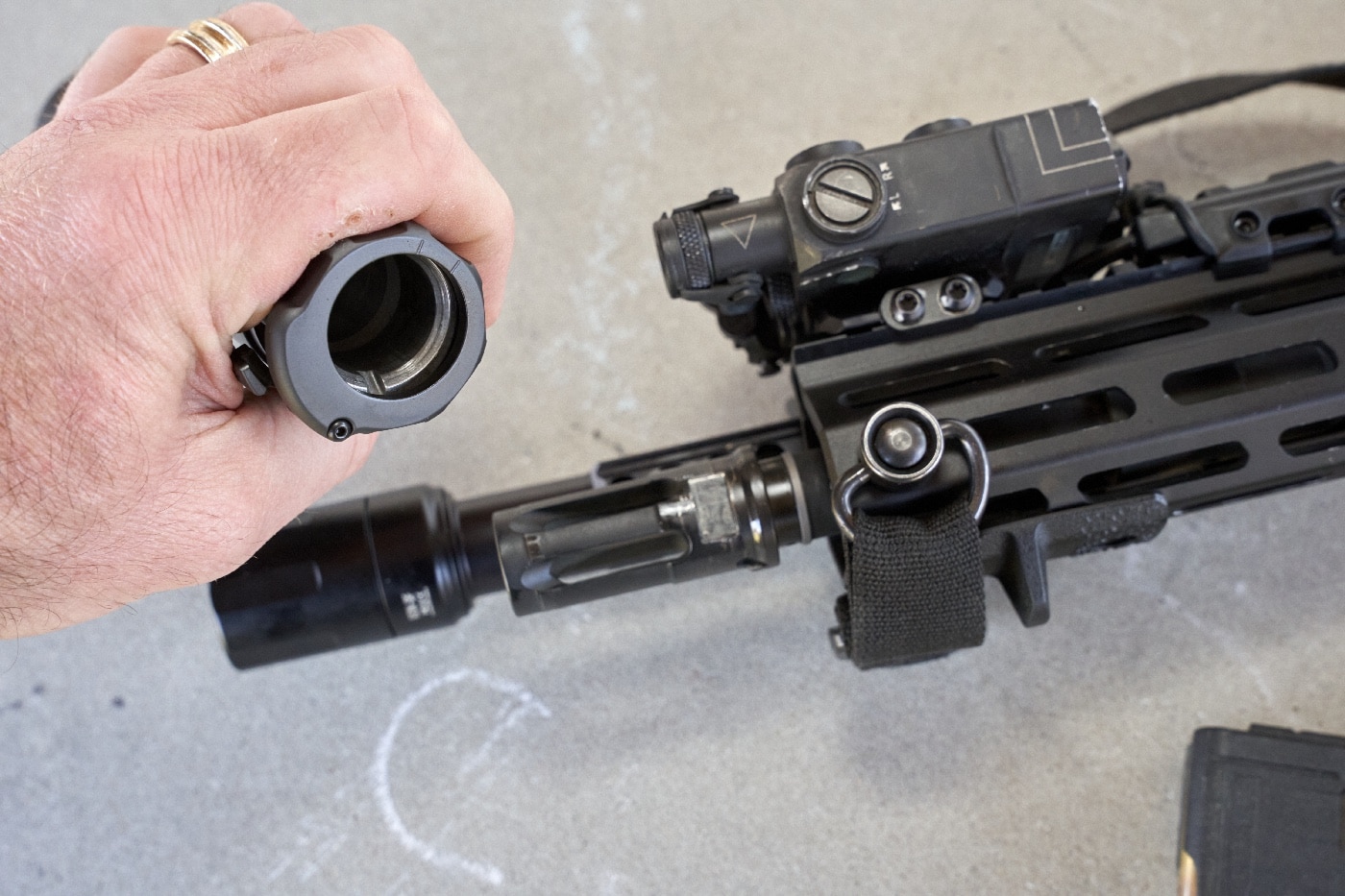
As I mentioned before, the aspect of my rifle that consistently needed attention was my suppressor. It routinely needed to be turned back onto my rifle. This was an extra step and an additional worry.
SureFire’s SOCOM suppressors have long addressed this issue. The ratcheting locking ring in the RC3 locks positively, virtually guaranteeing that the suppressor stays affixed securely to the rifle. This is designed to prevent the possibility of a baffle strike and ensure your round goes exactly where you send it.
Well Worth It
The SureFire RC3’s performance speaks for itself, and the price reflects its capabilities. MSRP for the RC3 sits at $1,799, so this is a significant investment. However, the SureFire brand speaks for itself, and I have no doubt this price reflects the company’s significant investment in research and development for this flagship suppressor.
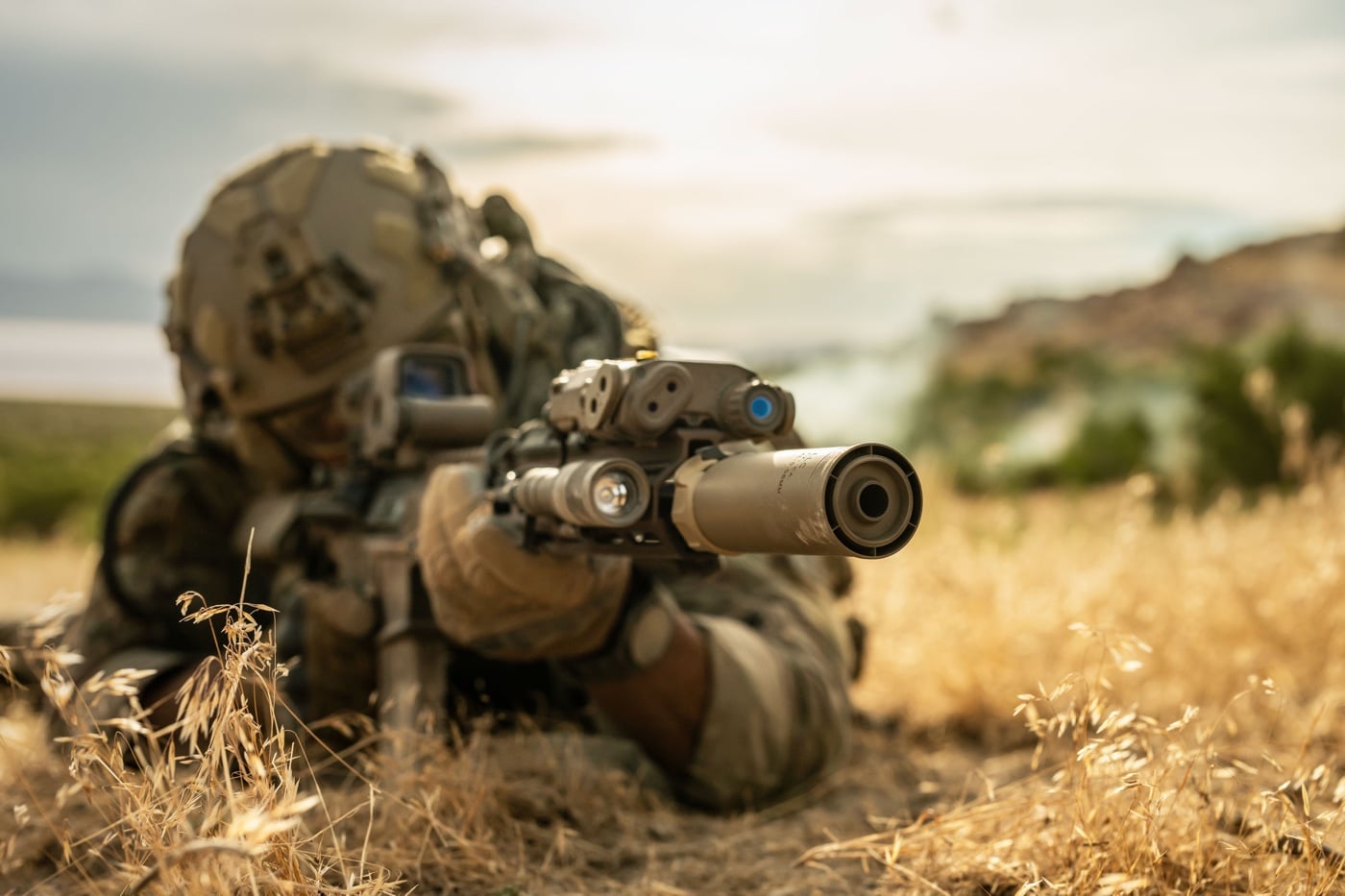
Yes, there are lower-priced suppressors out there. However, I look at things a bit differently. At some point, lives will depend on the tools I have in my toolkit. I don’t think there’s a single person out there who would want me to show up at their home with a potentially inferior product when lives are on the line. The SureFire SOCOM RC3 will definitely be living on the sharp end of my rifle.
Of course, everything I write here is my own opinion. I’m not the only one that feels strongly about the RC3, and I value the opinions of those with relevant experience. I’m lucky to have lots of folks with varied backgrounds in my personal and professional life, and I remember a specific conversation with one of those folks during training. He summed it up perfectly when he outlined his decision-making process for selecting critical tools. “I went to war with SureFire.” When someone with deep experience speaks, it makes sense to listen.
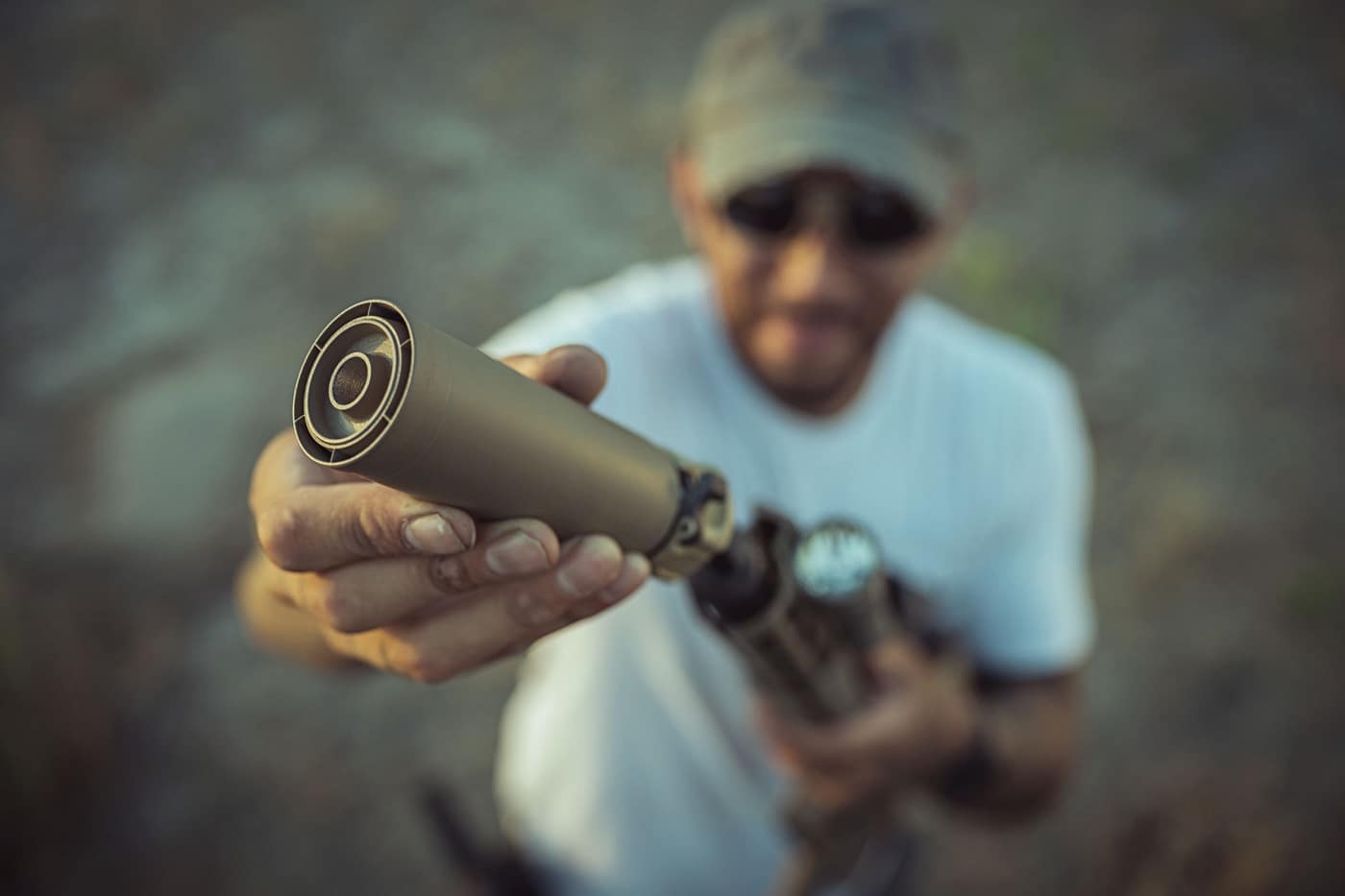
I’m not planning on going to war, but I prepare daily for a skirmish in my job as a law enforcement officer. I know I can rely on my Springfield SAINT Victor SBR and the SureFire SOCOM556-RC3. I believe the citizens I’ve sworn to protect can as well.
If you’re looking for top-tier suppression performance, the RC3 should be at the top of your list.
Editor’s Note: Please be sure to check out The Armory Life Forum, where you can comment about our daily articles, as well as just talk guns and gear. Click the “Go To Forum Thread” link below to jump in and discuss this article and much more!
Join the Discussion
Featured in this article
Continue Reading
Did you enjoy this article?

 51
51




